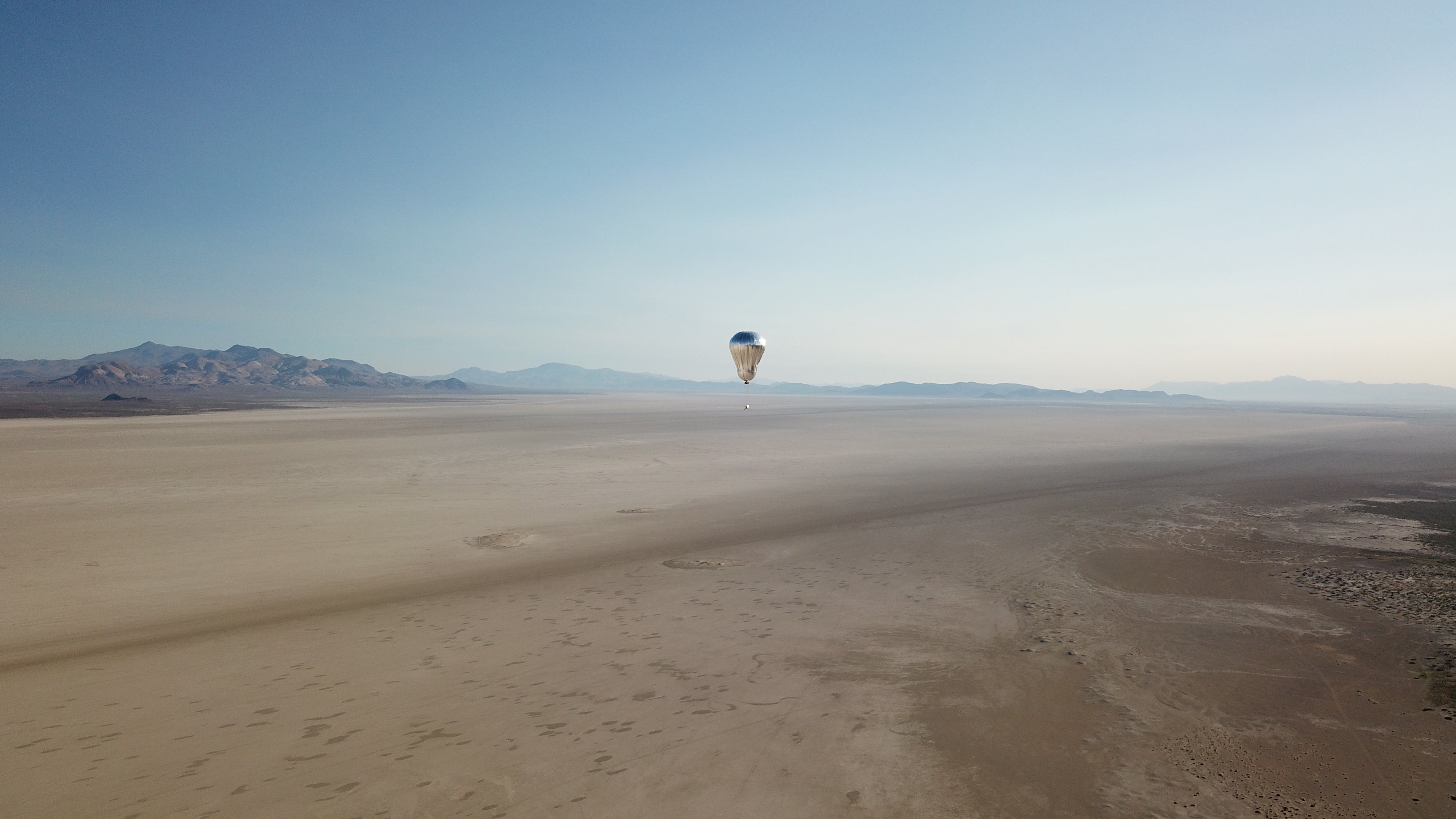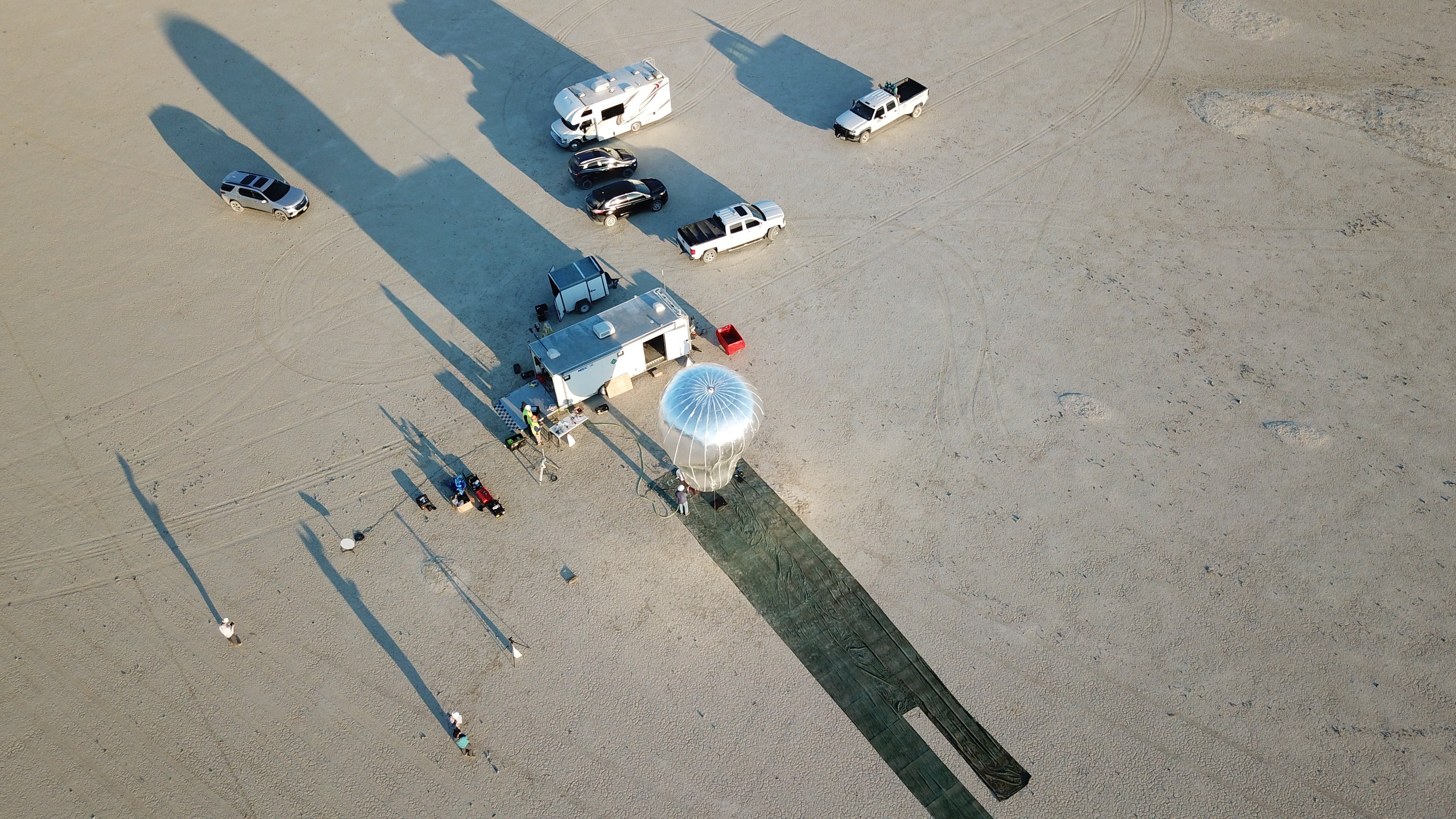NASA wants to send a giant silver balloon to the hellish world of Venus, where the floating robot would explore the toxic Venusian atmosphere. Functional tests of a smaller prototype recently took place in a Nevada desert in preparation for this upcoming mission to the solar system’s inferno.
The prototype of the aerial robotic balloon, or aerobot, just completed two successful test flights above the Black Rock Desert in Nevada. A team of scientists and engineers from NASA’s Jet Propulsion Laboratory watched from below as the shimmery balloon flew at an altitude of about 1,000 metres. Conditions in this part of Earth’s atmosphere are somewhat similar to conditions found on Venus, but at heights reaching 55 kilometres above its scorched surface.
“The success of these test flights is a huge deal for us: We’ve successfully demonstrated the technology we’ll need for investigating the clouds of Venus,” Paul Byrne, an associate professor at Washington University in St. Louis and aerobot science collaborator, said in a statement. “These tests form the foundation for how we can achieve long-term robotic exploration high above Venus’ hellish surface.”
Venus is basically Earth’s evil twin. The neighbouring planets share an analogous past as two rocky worlds with similar sizes and density, but Venus now boasts extreme conditions that make it inhospitable for probes. The planet’s average temperature is over 450 degrees Celsius, with a volcanic landscape and a carbon dioxide-rich atmosphere. Venus’s atmosphere is also full of thick sulfuric acid clouds that make it nearly impossible for spacecraft to image the planet’s surface.

The team behind the aerobot balloon designed it with multilayered material that includes an acid-proof coating, a metallization layer to reduce solar heating, and a rigid inner layer that makes it capable of carrying science instruments, according to NASA. “The materials being used for Venus survivability are challenging to fabricate with, and the robustness of handling we’ve demonstrated in the Nevada launch and recovery gives us confidence for balloon’s reliability on Venus,” Tim Lachenmeier, chief executive officer of Near Space Corporation and co-investigator for the mission concept, said in a statement. Near Space built the balloon with techniques it uses to create aerospace inflatables on Earth.
It’s also not just one balloon — it’s more of a “balloon within a balloon” design. A rigid inner reservoir is filled with helium under high pressure, which gets tucked inside a larger outer helium balloon that can expand and contract. This design will allow the balloon to change altitude as it cruises through the Venusian atmosphere; aerobot will pump helium into the outer balloon to give it more buoyancy and then pump it back into the reservoir to lower its altitude. The prototype is three times smaller than the final product destined for Venus.
The aerobot won’t be alone during the mission. An accompanying orbiter will take scientific measurements and relay data between the balloon and ground controllers on Earth. The pair will observe Venus for roughly 100 days, analysing the chemical composition of the clouds and monitoring the atmosphere for acoustic waves caused by venusquakes.

This isn’t the first time scientists will have sent a balloon to Venus. In 1985, the Soviet Union’s twin Vega 1 and 2 probes, consisting of balloons and landers, arrived at the planet, but they only lasted for about 46 hours owing to limited battery life. The aerobot mission should last longer.
“We’ve recorded a mountain of data from these flights and are looking forward to using it to improve our simulation models before exploring our sister planet,” robotics technologist Jacob Izraelevitz, who leads the balloon development as the JPL principal investigator of the flight tests, said in a statement.
NASA hasn’t sent a dedicated probe to Venus since the Magellan program, which arrived at the planet in 1989. Later this decade, however, NASA’s DAVINCI probe will head to Venus, where it will plunge through Venus’s atmosphere before landing on its surface. DAVINCI is one of three upcoming Venus missions, with the super-hot planet finally getting the attention it deserves — with our apologies to Mars fans.
More: NASA’s DAVINCI Mission Will Plunge Through the Hellish Atmosphere of Venus
